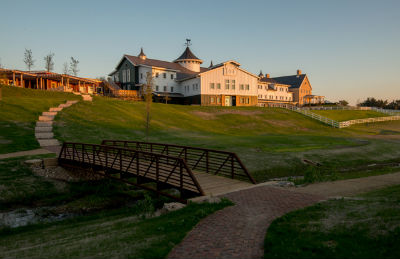Government Grants
Business Grants
Home Owner Programs
Federal Programs
About Us
Proposed Cooperative Agreement for Dendrochronological Investigations to Evaluate Forest Ecosystems
THIS IS A 2 PHASE APPROACH.
SOI DUE:
17 November 2023, 2:00 P.M./Central Time FULL PROPOSAL DUE:
15 December 2023/2:00 P.M./Central Time A.
Background Dendrochronology provides a reliable dating method for tree species that form an annual ring during a single growing season, which can allow for dating to a specific year (unlike radiocarbon dating).
Variation in the width of tree rings may contain information on biological and environmental events which in turn can be used to draw inferences on the timing of processes like forest stand dynamics, past climate, and disturbance regimes.
This can be especially useful for natural resources managers that need to make informed management decisions with little to no historical data at their respective site.
Additionally, sampling methods can be non-destructive, as increment cores can be extracted from trees without damaging them, an added benefit when studying sensitive habitat types or threatened and endangered species.
Using dendrochronology to assess and track biological and environmental events will help fill knowledge gaps that will benefit of organizations responsible for the management of forests and forested wetlands.
B.
Program Description/Objective This research focuses on applying dendrochronology to make inferences on forest health and dynamics to inform land management decisions.
The project will leverage site-specific data or need to be expanded to larger areas of interest (AOI).
The project will be funded for an initial year, and dependent upon the progress of research objectives, may be funded in outyears (Optional Year 1 and Optional Year 2).
The Government is not expecting the periods of performance to overlap.
Objectives:
The objectives of the project for the initial year are as follows:
1. Develop technical team and identify initial study AOI for dendrochronology research.
2. Data collection effort at selected AOI(s).
3. Analyze and report results of dendrochronological investigations.
4. Generate a peer-reviewed journal article(s) in conjunction with ERDC researchers integrating all study conclusions.
5. Develop and present public seminars based on study findings.
The objectives of the project for Optional Year 1 are as follows:
1. Expand initial study site or select new AOI.
2. Data collection effort at selected AOI(s).
3. Analyze and report results of dendrochronological investigations.
4. Generate a peer-reviewed journal article(s) in conjunction with ERDC researchers integrating all study conclusions.
5. Develop and present public seminars based on study findings.
The objectives of the project for Optional Year 2 are as follows:
1. Expand Optional Year 1 study site or select new AOI.
2. Data collection effort at selected AOI(s).
3. Analyze and report results of dendrochronological investigations.
4. Generate a peer-reviewed journal article(s) in conjunction with ERDC researchers integrating all study conclusions.
5. Develop and present public seminars based on study findings.
Successful applicants should have expert knowledge of 1) dendrochronology; 2) field data collection capabilities; 3) analysis and publishing of results.
Areas of expertise that may be required in combination to perform this study include experience in dendrochronological subdisciplines (i.e., dendroclimatology, dendroecology, etc.).
SOI DUE:
17 November 2023, 2:00 P.M./Central Time FULL PROPOSAL DUE:
15 December 2023/2:00 P.M./Central Time A.
Background Dendrochronology provides a reliable dating method for tree species that form an annual ring during a single growing season, which can allow for dating to a specific year (unlike radiocarbon dating).
Variation in the width of tree rings may contain information on biological and environmental events which in turn can be used to draw inferences on the timing of processes like forest stand dynamics, past climate, and disturbance regimes.
This can be especially useful for natural resources managers that need to make informed management decisions with little to no historical data at their respective site.
Additionally, sampling methods can be non-destructive, as increment cores can be extracted from trees without damaging them, an added benefit when studying sensitive habitat types or threatened and endangered species.
Using dendrochronology to assess and track biological and environmental events will help fill knowledge gaps that will benefit of organizations responsible for the management of forests and forested wetlands.
B.
Program Description/Objective This research focuses on applying dendrochronology to make inferences on forest health and dynamics to inform land management decisions.
The project will leverage site-specific data or need to be expanded to larger areas of interest (AOI).
The project will be funded for an initial year, and dependent upon the progress of research objectives, may be funded in outyears (Optional Year 1 and Optional Year 2).
The Government is not expecting the periods of performance to overlap.
Objectives:
The objectives of the project for the initial year are as follows:
1. Develop technical team and identify initial study AOI for dendrochronology research.
2. Data collection effort at selected AOI(s).
3. Analyze and report results of dendrochronological investigations.
4. Generate a peer-reviewed journal article(s) in conjunction with ERDC researchers integrating all study conclusions.
5. Develop and present public seminars based on study findings.
The objectives of the project for Optional Year 1 are as follows:
1. Expand initial study site or select new AOI.
2. Data collection effort at selected AOI(s).
3. Analyze and report results of dendrochronological investigations.
4. Generate a peer-reviewed journal article(s) in conjunction with ERDC researchers integrating all study conclusions.
5. Develop and present public seminars based on study findings.
The objectives of the project for Optional Year 2 are as follows:
1. Expand Optional Year 1 study site or select new AOI.
2. Data collection effort at selected AOI(s).
3. Analyze and report results of dendrochronological investigations.
4. Generate a peer-reviewed journal article(s) in conjunction with ERDC researchers integrating all study conclusions.
5. Develop and present public seminars based on study findings.
Successful applicants should have expert knowledge of 1) dendrochronology; 2) field data collection capabilities; 3) analysis and publishing of results.
Areas of expertise that may be required in combination to perform this study include experience in dendrochronological subdisciplines (i.e., dendroclimatology, dendroecology, etc.).
Related Programs
Basic, Applied, and Advanced Research in Science and Engineering
Department Of Defense
Agency: Department of Defense
Office: Dept. of the Army -- Corps of Engineers
Estimated Funding: $20,000
Office: Dept. of the Army -- Corps of Engineers
Estimated Funding: $20,000
Obtain Full Opportunity Text:
https://grants.nih.gov/grants/guide/rfa-files/RFA-DA-25-013.html
Additional Information of Eligibility:
This opportunity is restricted to non-federal partners of the Gulf Coast Cooperative Ecosystems Studies Unit (CESU) or the Great Rivers Cooperative Ecosystems Studies Unit (CESU).
Full Opportunity Web Address:
http://grants.nih.gov/grants/guide/rfa-files/RFA-DA-25-013.html
Contact:
Agency Email Description:
phoebe fuller
Agency Email:
Date Posted:
2023-10-18
Application Due Date:
Archive Date:
2023-12-31
Social Entrepreneurship
Spotlight
Change in the World of Work and Enterprise: Get Young People Into Work

The position young people are dealt with can be complex, and yet the entire economic system is still focused for an age that’s almost gone astray. The solution? Promoting social enterprise and getting these young people integrated into work.

